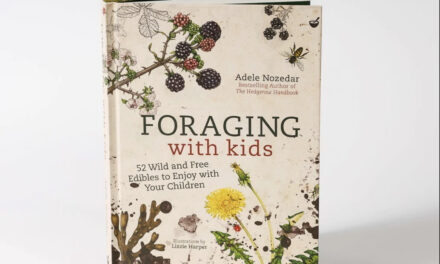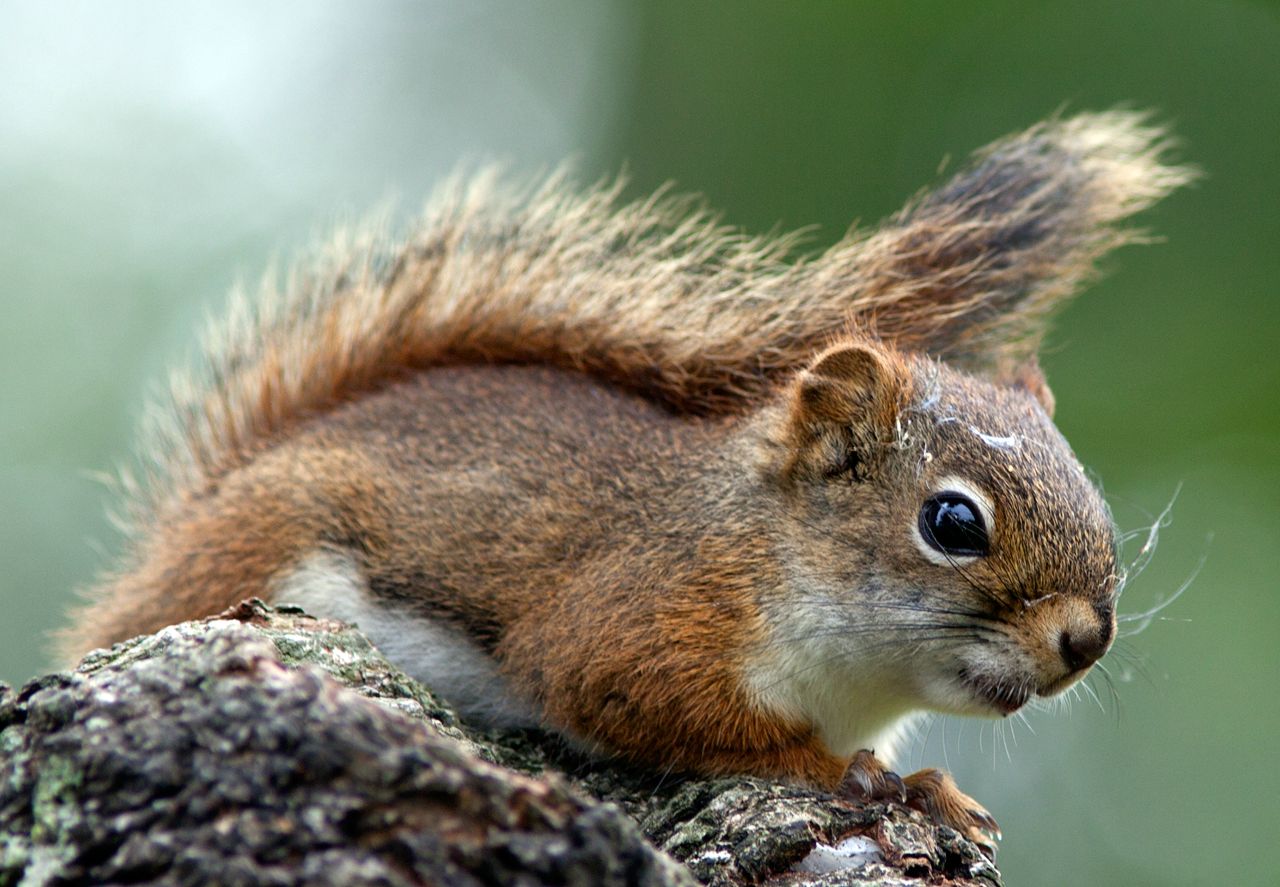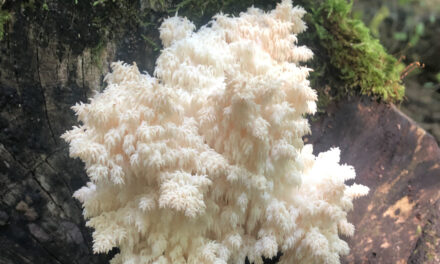Ramps, dandelions, and fiddleheads… what a veritable feast from the forest’s spring bounty!
Okay, I’ll admit it, I’m one of those people you read about who decamped from the big city for the bucolic pleasures of rural Ontario at the very beginning of the pandemic.
Having been a teeny bit of a survivalist for a good few decades (see my Prepper’s Pantry and How To Eat Squirrel), I had already dabbled in a light bit of foraging in years previous; but when I found myself out in the forest every day, most often with a young information-sponge child at my side, I wholly embraced the lifestyle, returning almost every day from our walks with something interesting to eat.
There’s a lot of deliciously edible stuff out there, but for the purposes of this piece we’ll be looking at three spring essentials: ramps, dandelions, and fiddleheads.
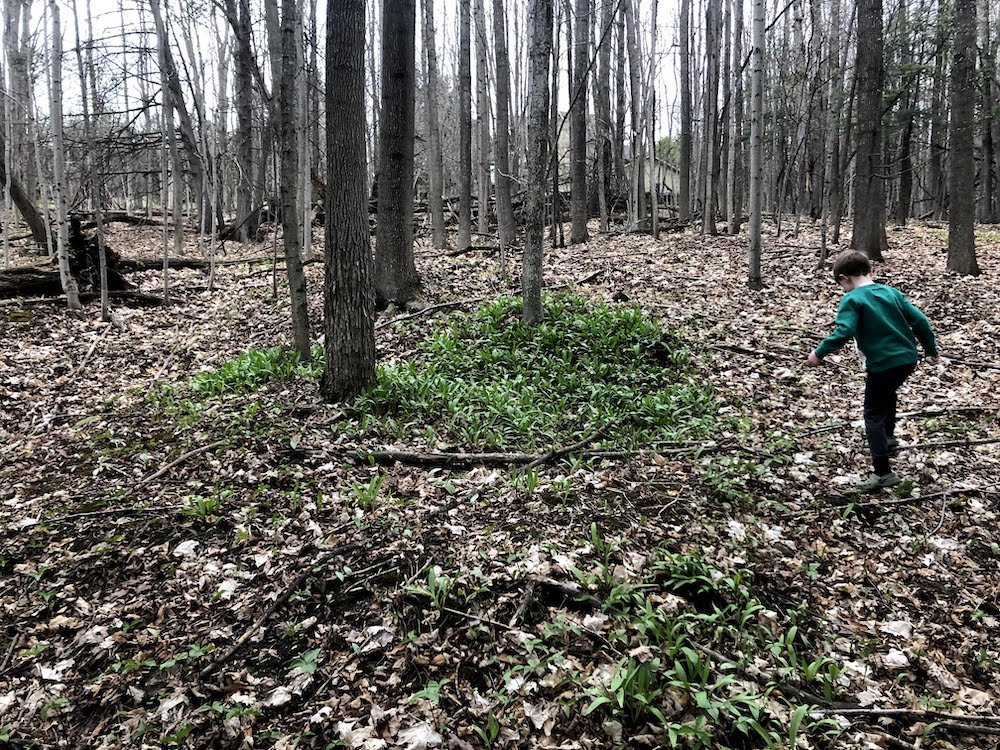
A very small patch of ramps early in the season at a hidden location, Ontario.
Ramps (Allium tricoccum) AKA Wild Leeks
I’ve always thought it rather ridiculous just how much retail stores such as Harvest Wagon charge for a meagre handful of ramps, especially when they grow so plentifully all over the province. The trick is knowing where (and when) to find them… and then keeping that spot a secret. Seriously.
Don’t tell a soul.
The reason for this way of thinking is that many a greedy opportunist will locate such a ramp patch and pull up everything they can see, as one can make a fair bit of coin selling ramps to restaurants in the spring months. Such selfish actions basically decimate the population in that location, as it take approximately 10 years for such a patch to recover from such an act of wanton carpetbaggery. Bastards.
So where does one find these elusive little fellows?
Ramps occur in eastern North America, all the way from Georgia up to Canada. We tend to find them under the shelter of deciduous trees, especially where there is a thick canopy and a fair bit of organic matter on the forest floor. Our son pointed out that he saw trilliums growing close-by to any ramp patches we came across, something I hadn’t noticed previously, but the wee blighter was correct. He’s an observant little cookie that one!
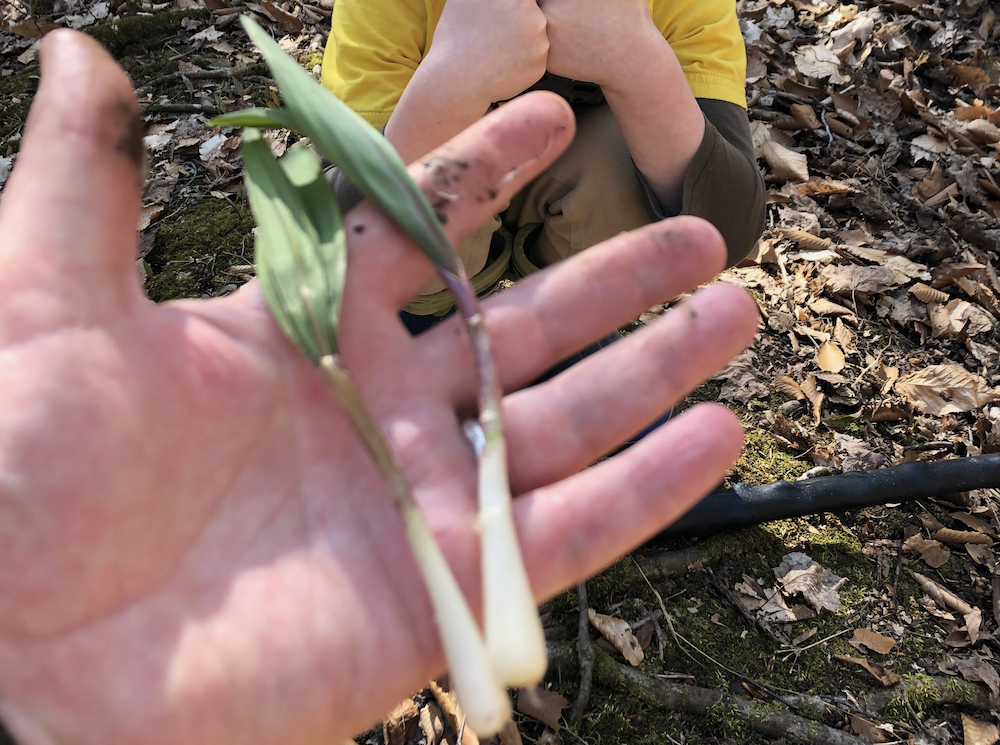
Here you can see the entire plant, leaves and root bulb, but these days I prefer to pick them without the root so as to keep the patch in good shape.
One can find two distinct types, the milder white-stemmed narrow-leaf ramps and the red-stemmed wider leaf ramps, the red-stemmed being the most pungent.
Be extremely careful not to pick Lily of the Valley (Convallaria majalis) or False Hellebore (Veratrum genus) which can look very similar, and often grow in similar terrain.
The indicator of true ramps is always that exxxtreme garlicky smell, but if you are in any way unsure it is always best to give it a pass until can find an experienced forager to confirm its identity for you.
After getting some advice from Eigensinn Farm‘s Nobuyo Stadtlander late in the season last year, I’ve changed my harvesting style for 2021, picking only the leaves and leaving the bulbs in the earth, which she sees as the most sustainable method of foraging these much sought-after spring delicacies.
And it should go without saying, be sure to give them a really good wash before you begin preparing them.

Be sure to give them a seriously good rinse before you do anything to them… who knows who or what may have peed on them.
When it comes to eating ramps I have discovered that the less one does to them the better, as one really wants to retain that amazing garlicky odoriferousness, therefore one needs to cook them without losing that vibrant greenness.
I once made the mistake of attempting to create a ramp soup from a particularly bountiful harvest. This was a really bad idea, as the resultant sludge looked so very unappealing and all that wonderful flavour had been entirely cooked out of it.
The simpler the preparation the better, and so stirring some chopped leaves into some buttered pasta works an absolute treat.
If you do receive ramps with the bulbs intact, many of my colleagues often pickle them, and I have to admit that these are utterly delightful.
Another way to preserve ramps’ unique flavour is to mix chopped ramps into a quality salted softened butter, fill a couple of ice cube trays with the ramp-butter mixture, and then throw them in the freezer. This process allows one to simply pop a couple of cubes out when the need arises, as a little swift punch of ramp flavour can bring a touch of cryogenically suspended spring to so many dishes. They keep for a good few months too. I’d just recommend that this is done mid-season so as one isn’t preserving the often bitter nature of the fully mature plant.

With ramps, the simpler the better. Here seen mixed into hot buttered pasta. Amazing.
How do they taste? Well, people either love them or loathe them. Their sweet garlic/onion pungency certainly isn’t for everyone, that’s for sure. The thiols contained within are highly odour-active molecules and as such can significantly contribute to aroma while being present at extremely low concentrations. And by that, read: they can really reek. I can smell a ramp patch from a considerable distance!
There are dark historical stories about the poorer children in the southern states of the US eating huge quantities of ramps (as they were free for the taking), and because of the resultant odour emitting from their breath/bodies, were segregated from the other children in school.
So basically, it’s for the better of all involved if you and partner/friends/family all consume ramps at the same sitting, as ramps can give you the equivalent of garlic breath on steroids.
Also, a little word of advice regarding when to pick them…
Try them earlier in the season rather than at the tail end, as said thiols (S-alk(en)yl-l-cysteine sulfoxides if one was to be pedantic) really build up in the leaves as the plant comes to the end of its annual lifecycle (around the end of April in Ontario, but this can vary from year to year). Last year I got a little overzealous with my ramp intake late April and found myself in a painful ramp stupor (like a smoked meat stupor, but you positively reek of ramps).
Jamie (on phone): “Hey there, Chef X (a well known Toronto Chef), do you know if it is possible to poison yourself on ramps? as I am feeling pretty rough tonight. Huge pressure headache and my guts are in knots… Arrrrrrr… ”
Chef X: “Errrr… well… I guess… exactly how many did you eat?”
Jamie: “Too many… evidently… too… many… Ugh… I have to runnnnn… thanks… bye!”
*click*
Just be careful and consume within reasonable moderation, especially towards the end of the season.
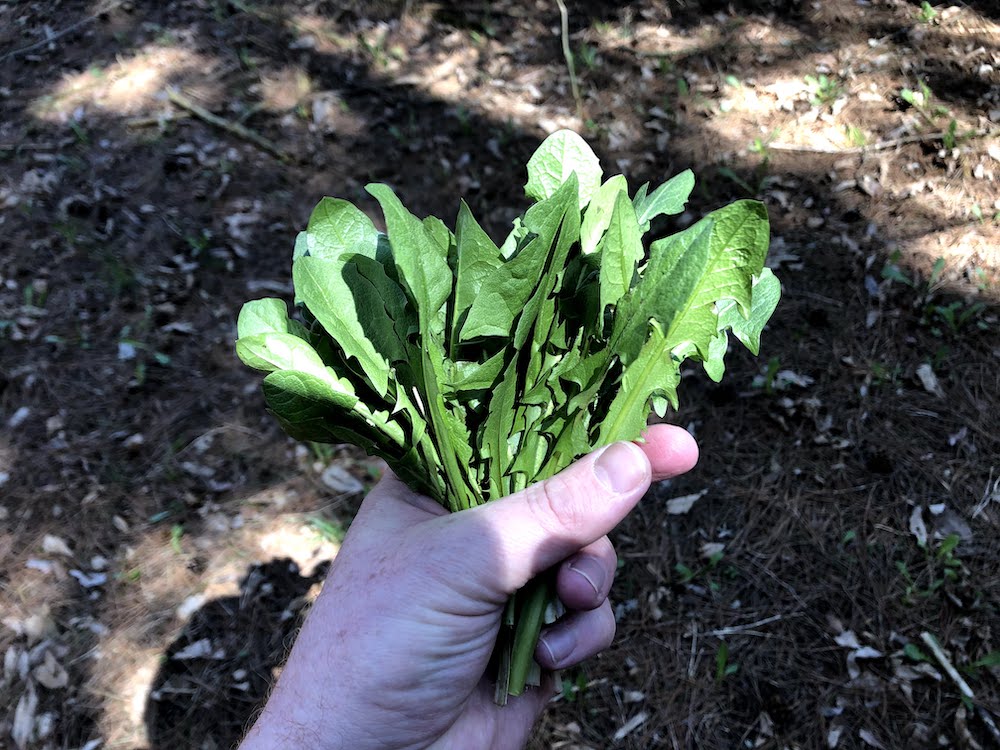
Try to get the youngest, reasonably-sized dandelion leaves you can find.
Dandelions (Taraxacum officinale)
Although dandelions are the bane of my mother-in-law and her gorgeous lawn, they happen to be another of my favourite foraged treasures.
The word dandelion comes from the French dent de lion, in Medieval Latin dens leonis, meaning lion’s tooth, from the toothed outline of the leaves. In the French vernacular it is also known as pissenlit, a noun composed of a conjugated form of the verb pisser, to piss, the preposition en, meaning in, and the noun lit, bed, due to this plants diuretic properties. After explaining this to our son, he now refuses to eat them for fear of waking up wet. Give it a few years and I think he’ll feel more comfortable. I’ve never had any issues in that department, and I eat a LOT of pissenlit. Fingers crossed that this doesn’t change in the future…
For me, the secret with dandelions is to harvest the gorgeous young leaves that appear in the springtime, as I find these to be the most flavourful, although one can eat them whenever throughout the season. Again, give them a very good wash before preparation.
One can eat these young, fresh leaves uncooked in a salad, but for me they really come into their own when sautéed with butter and garlic or shallots, and treated a little like spinach. Much like spinach, it reduces dramatically as it is cooked, so always pick a lot more than you’ll think you’ll use.
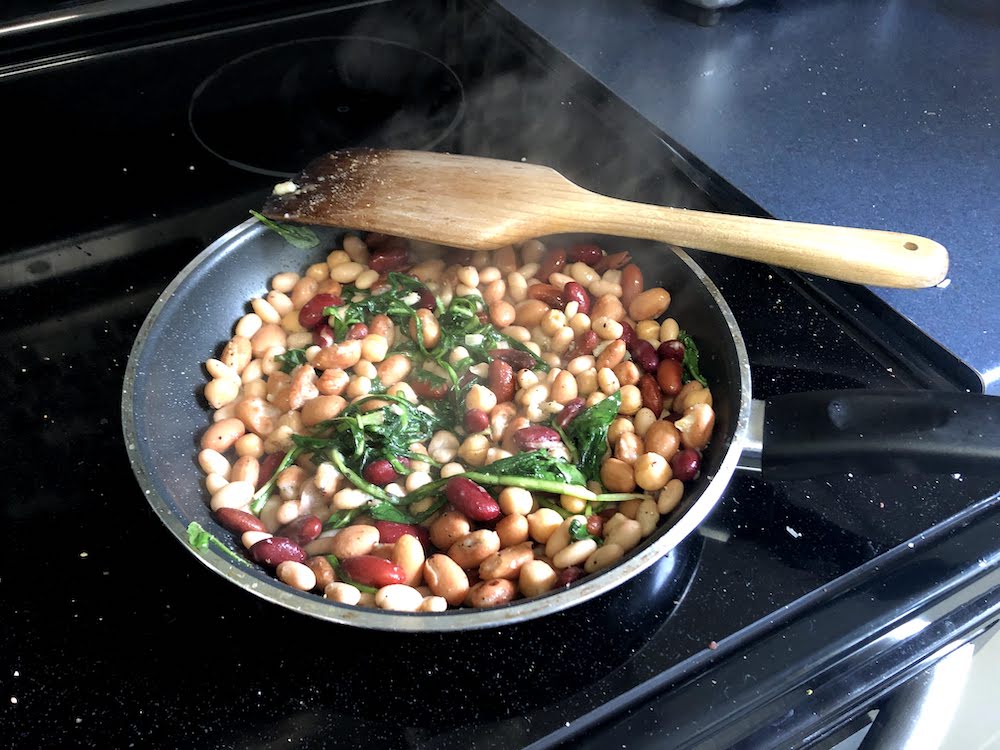
A favourite in our home is to sauté them with butter and garlic before mixing them into warmed beans, like kidney beans and chick peas.
In the spring one can eat the flowers raw, as they are deliciously sweet and crunchy, but I like to lightly bread them and quickly pan fry them, to create a fritter of sorts. Whether one has them raw or cooked, I would recommend to remove the base of the flowering head as the green sepals can be extremely bitter.
One can also make a dandelion root tea that is an amazing detoxifier and anti-inflammatory, although I’ve never gone down that path myself… yet.

Such a fleeting delicacy… the trick is picking these things before they unfurl. Only pick them when they are tightly coiled.
Fiddleheads (Polypodiopsida or Polypodiophyta) AKA Fern heads
I’ve cooked almost every day since I was a teenager, and all these decades later I have only ever given someone food poisoning once, and that was my now ex-wife… and it was with fiddleheads. I still don’t think that she has forgiven me for that night, even after all these years.
I’ve never really used the term superfood, but seeing as fiddleheads contain iron, riboflavin, omega-3 and omega-6 fatty acids, fibre, and vitamins A and C, I guess they would fall into that category… and what’s more, they are free!
Fiddleheads are basically rolled up baby ferns, although not all ferns are suitable for this purpose. Avoid fiddleheads from foxglove and bracken ferns as these can both be toxic. What one seeks is Ostrich fern fiddleheads, and these can be identified some unique characteristics that are only exhibited by ostrich ferns. The fern skin is smooth with a deep green colour and there is a deep U-shaped groove in the stem that looks similar to that found in celery. Fiddleheads emerge, covered in a papery-brown husk, from a black clump known as a crown. Once seen for the first time, Ostrich fiddleheads become very easy to recognize. They are bright green and can easily be seen amidst the dark forest floor from which they emerge. If in any doubt, wait until you can get the confirmation of an experienced forager.
One can find them April through early June in low lying wet and forested areas; we usually find them in the forests on riverbanks. Be sure to only pick them when they are tightly coiled. It’s best to use a sharp knife for this. Picking no more than one half of the emerged fiddleheads from each crown is important for a sustainable harvest.

If you choose to follow the government’s guidance and cook them for 15 minutes, then you are better mixing them into an omelette.
To prepare fiddleheads, be sure to remove any of the brown husk before rinsing well, as you’d be surprised how many insects can get into some of them.
I was obviously not the only person to poison others with fiddleheads as the government of Canada recommend that they are cooked in boiling water for 15 minutes (or steamed for 10 -12 minutes). Now, if one boils them in water for 15 minutes all that remains is a fiddlehead mush that is best added to an omelette (see above), but if you’d rather walk on the wild side, I’d recommend a quick flash blanche of around a minute and a half followed by a ice-cold water bath to retain the greenness.
Important: ALWAYS DISCARD THE COOKING WATER.
At this point, if one has an abundance of the things, freezing them is always an option. Just be sure to dry them off first, and they’ll keep good for around a year in their frozen state.
After this blanche/cool/dry prep, one can then sautée the fiddleheads in butter and garlic and they retain so much more of their crunchy texture and all of their green, wild asparagus-like flavours.

Otherwise, after a decent flash blanche, one can then give them a good sauté with butter and garlic/shallots.
Once picked (or blanched/cooled/dried), fiddleheads will keep for about two weeks in the fridge.
I really do like to serve these as an accompaniment to a main dish, although they work extremely well thrown into soups, salads, and pastas.
The most common problems people have with fiddleheads are overcooking and undercooking. Although it takes a while to learn how to get it right every time, fiddleheads are well worth the trouble, and are one of my favourite harbingers of springtime.

After the sauté with butter and garlic/shallots I simply mixed them into some fluffy couscous. Superb!
If you have any suggestions for other recipes to try with these forest floor-foraged treasures please let me know in the comments below, and I’ll give them a go next season.
Edinburgh-born/Toronto-based Sommelier, consultant, writer, judge, and educator Jamie Drummond is the Director of Programs/Editor of Good Food Revolution… And he’s just wishing that he had frozen a few more fiddleheads and made more ramp butter cubes.




